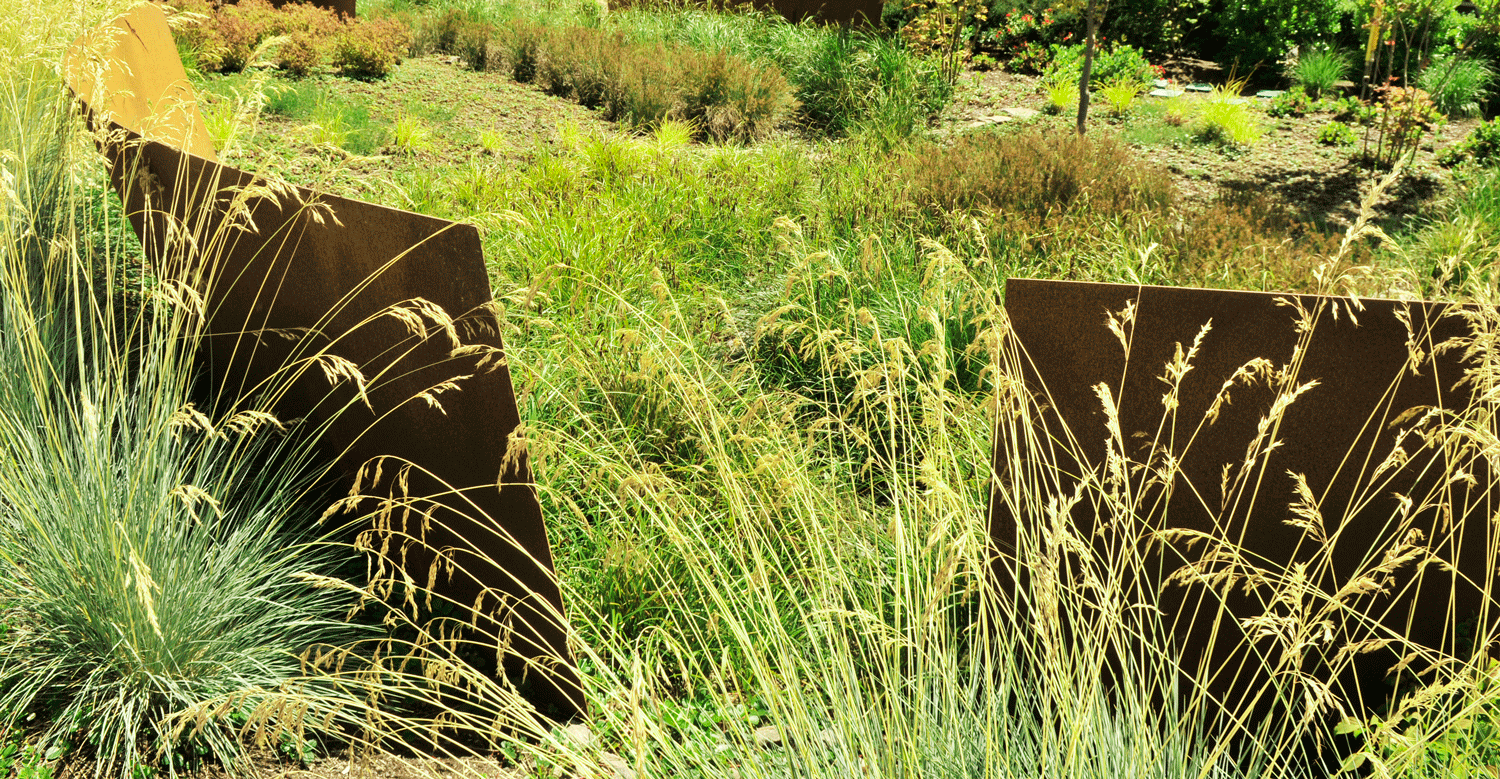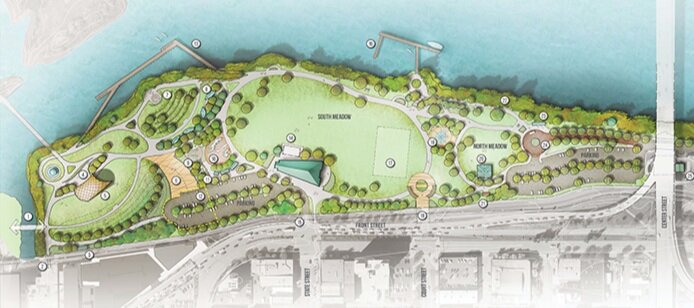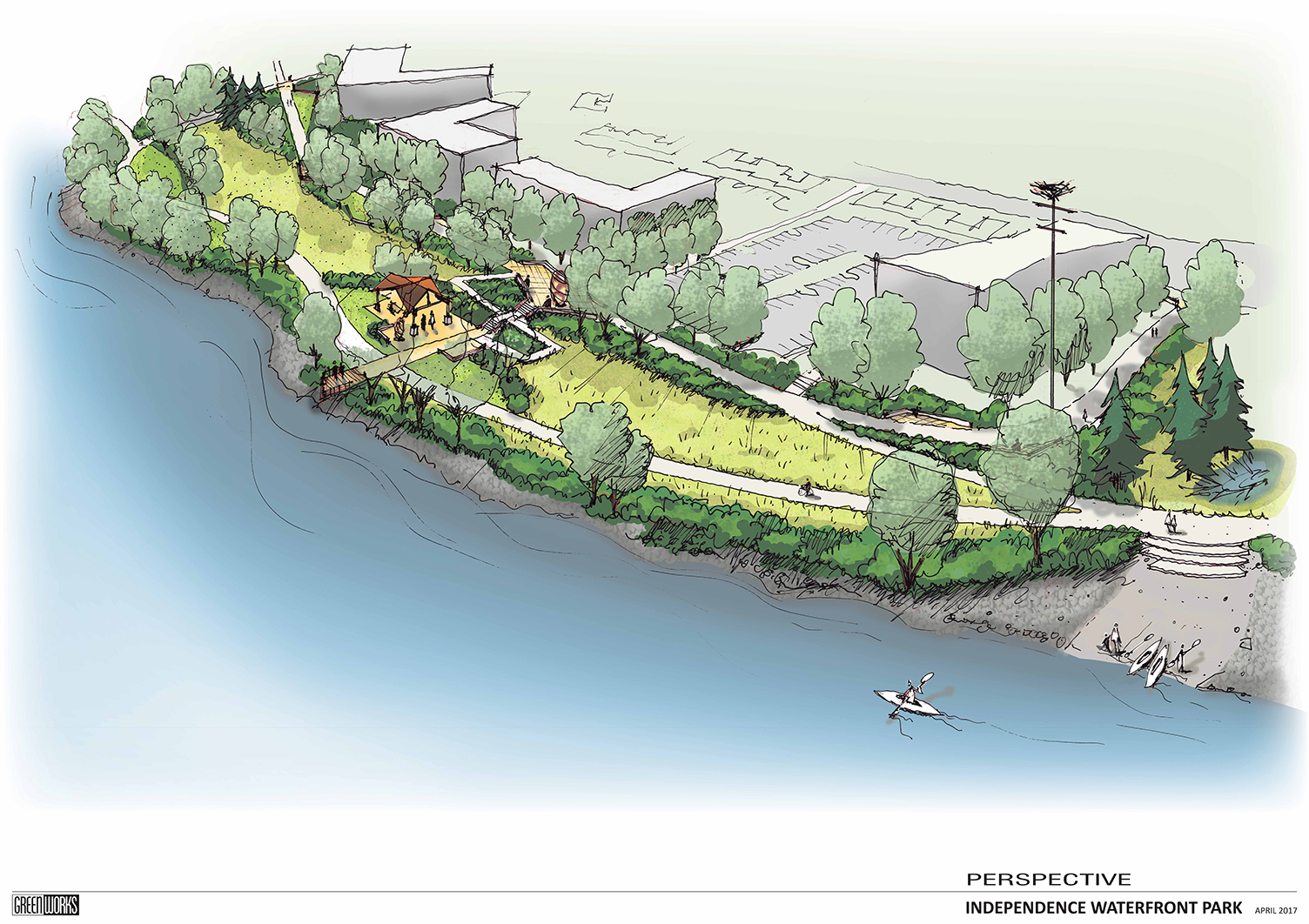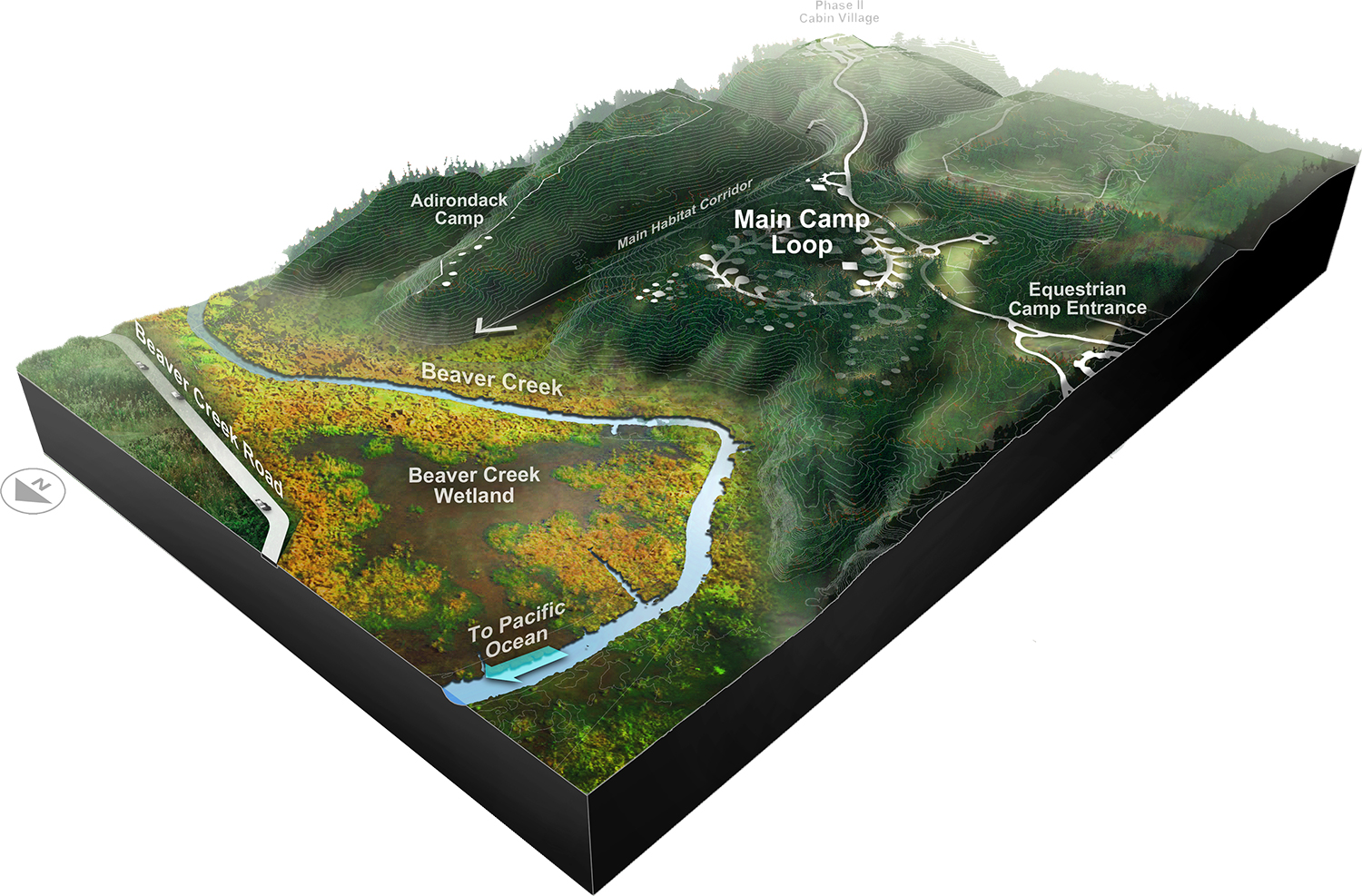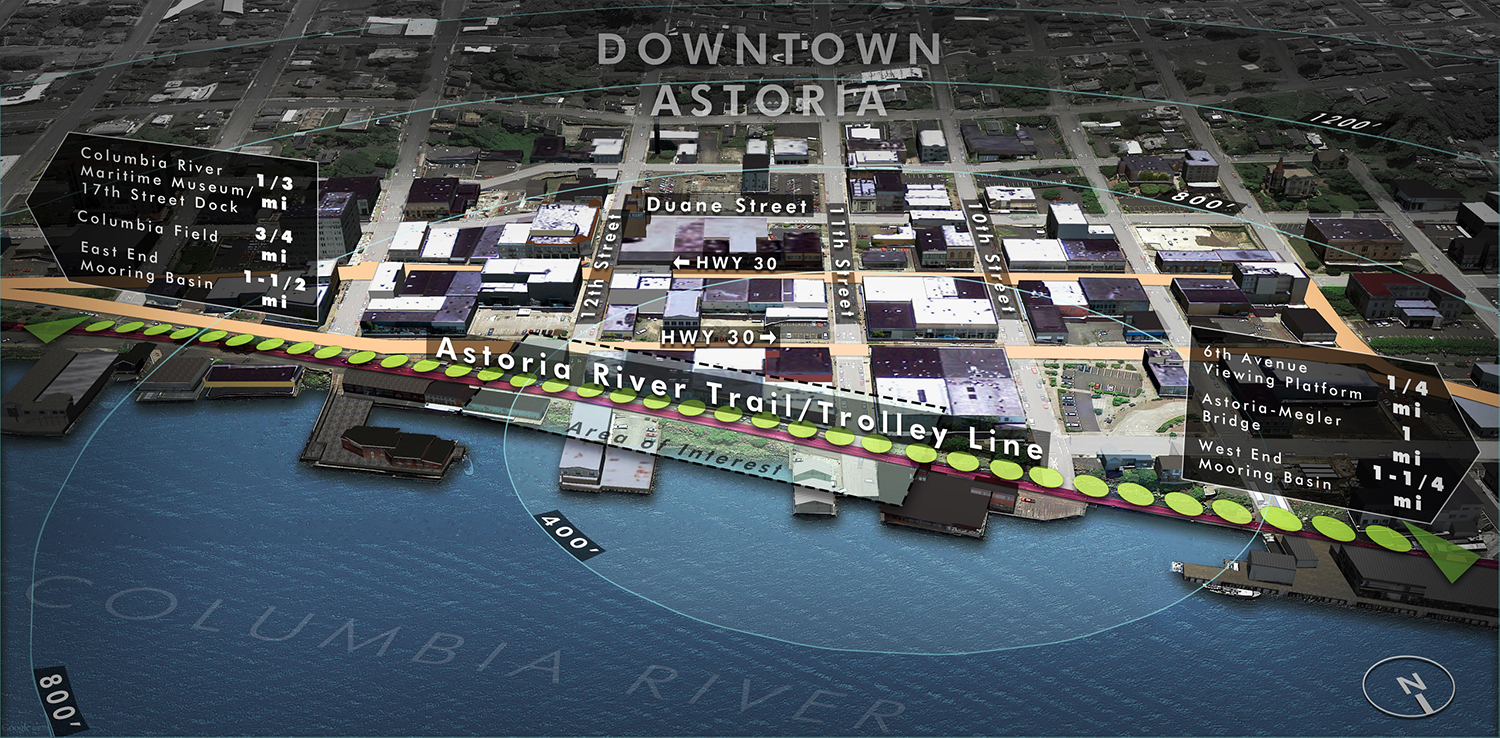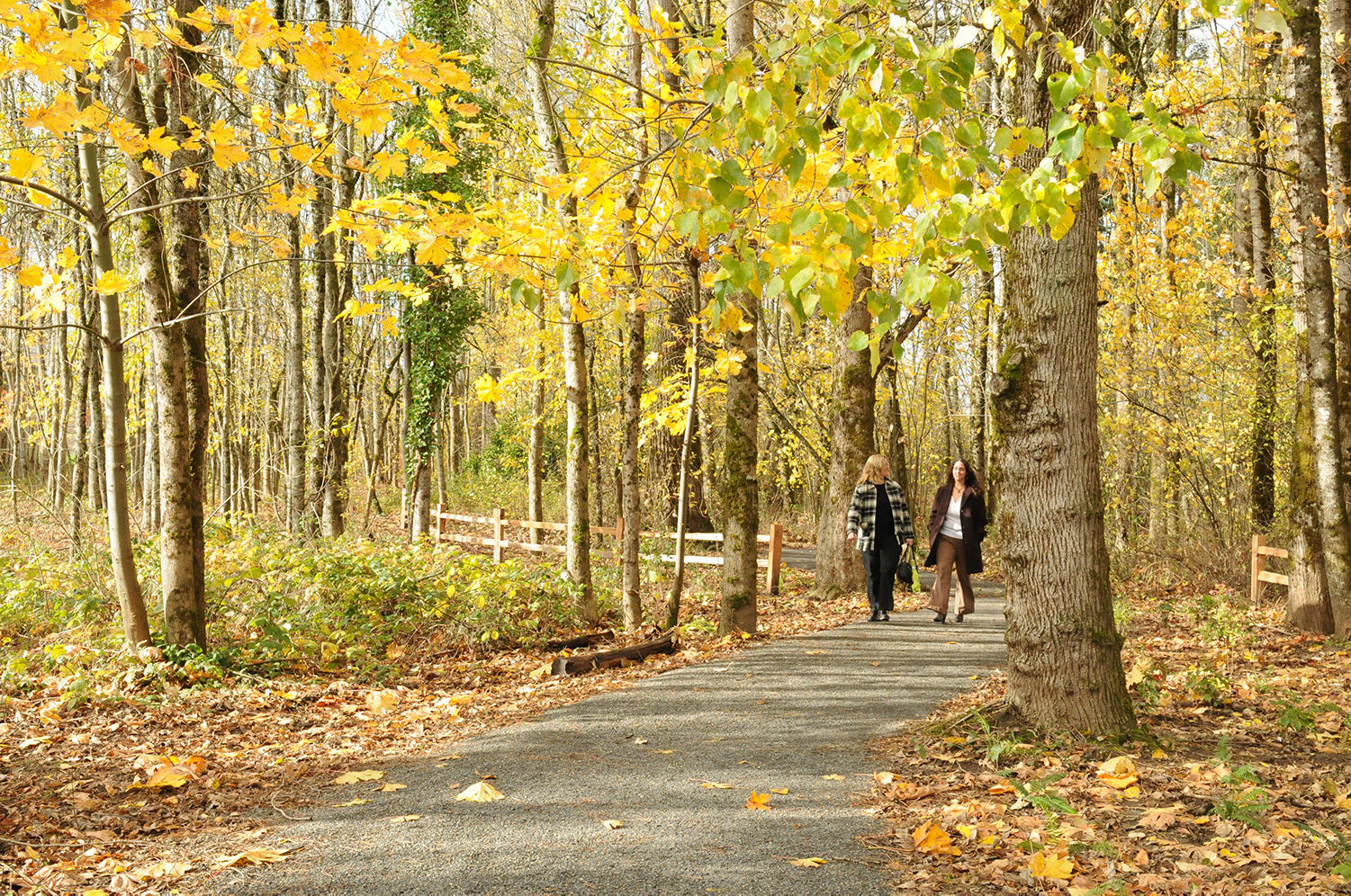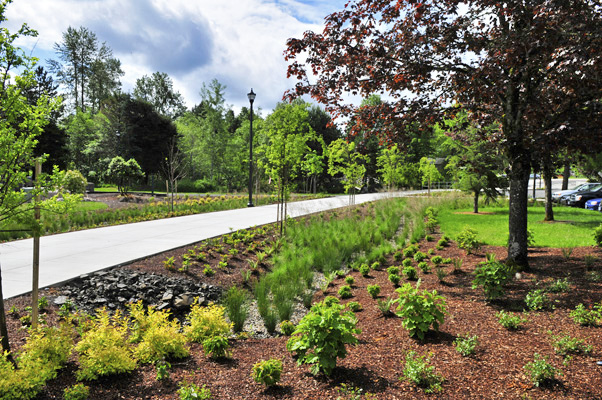Wade Creek Park
/Wade Creek Park Phase III
Greenworks and our sub-consultant Otak worked with the City of Estacada on a preliminary design for Wade Creek Park Phase III, a 3-acre park in Estacada, Oregon. The City has a vision of turning a pond located behind the library into a flowing stream as well as improving its outfall for maintenance and safety. The team conducted a geomorphic and hydrology study, and an assessment of the site by providing surveys for topography and tree health. Two alternatives were presented to the public. In order to cast a wider net of responses, GreenWorks created an on-line survey. The final design comprising of a riffle, pool, and channel complex with riparian plantings, an amphitheater, and walking trails was presented to City Council in early March of 2019 and was approved.
Rendering credit: Otak + Greenworks
Conceptual Design for the Wade Creek Park Community Building
We worked as a sub-consultant to Otak to provide design services for the Wade Creek Park Community Building, located to the northwest of the Estacada Public Library in Estacada, Oregon. The building will consist primarily of a multi-purpose room of +/- 1,000 square feet and accommodating approximately 75 to 100 people. The space will adapt to allow many different gatherings using include mobile partitions to subdivide the room. The building will also include a covered stage as part of a planned outdoor amphitheater. The plan includes additional spaces such as a small kitchen, storage room for furniture, utility closets and bathrooms. The conceptual design integrated with and was influenced by the Wade Creek Park Phase Ill master plan. GreenWorks was essential to the project’s coordination, test-fitting the proposed building layouts. The final product of our work was a conceptual design set that expresses the new building’s layout, elevations, roof plan, and assumed materials for the building. A cost estimate was provided as well. The conceptual design was used by the City of Estacada to pursue funding for the project.

